APEA 3P Exam Prep- Men's Health Questions and Answers with Explanations
Document Content and Description Below
APEA 3P Exam Prep- Men's Health Questions and Answers with Explanations A 50-year-old male comes to the nurse practitioner clinic for evaluation. He complains of chills, pelvic pain, and dysuria. He ... should be diagnosed with (VS in image): acute bacterial prostatitis. chronic bacterial prostatitis. urinary tract infection. nonbacterial prostatitis. A. Acute bacterial prostatitis should always be considered first in a male patient who presents with these symptoms. He may have cloudy urine and symptoms of obstruction, like dribbling. Chronic bacterial prostatitis presents with a more subtle presentation, such as frequency, urgency, and rarely, low-grade fever. Urinary tract infection is far less common in men than women and is usually associated with anal intercourse or being uncircumcised. Nonbacterial prostatitis presents like chronic prostatitis except that urine and prostate secretion cultures are negative. Noninfectious epididymitis is common in: soccer players. truck drivers. Correct marathon runners. men who wear boxer-style underwear. B. Noninfectious epididymitis occurs when there is reflux of urine into the epididymis from the ejaculatory ducts and vas deferens. This can cause ductal obstruction and acute inflammation without infection. This can occur if males spend a lot of time sitting. Truck drivers are particularly susceptible because they spend many uninterrupted hours sitting when they are driving. Other typical risk factors are vigorous exercise that involve heavy lifting or upper body workouts; especially sit-ups or abdominal crunches. The following PSA levels have been observed in a patient. What conclusion can be made following these annual readings (SEE IMAGE) They are all within the normal range. None are within the normal range. There is a steady increase that is worrisome. There is a steady increase but not worrisome. C. Evaluation of PSA velocity generally requires three serial readings over a 12-24 month period. The PSA velocity (the rate of PSA change over time), is concerning. A PSA velocity > .35 ng/mL per year is associated with high risk of death from prostate cancer. This patient should have prostate biopsy by a urologist. [Show More]
Last updated: 2 years ago
Preview 1 out of 11 pages
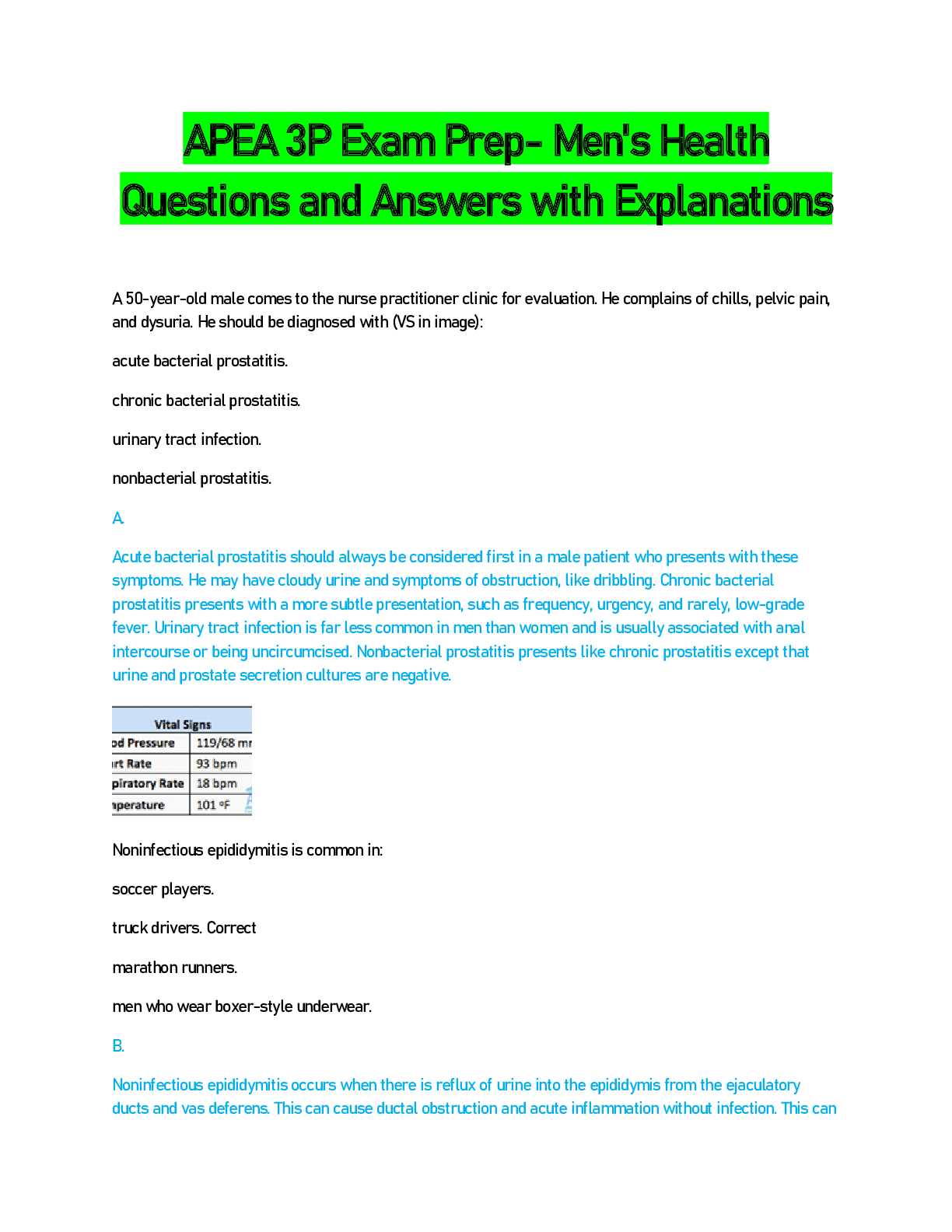
Buy this document to get the full access instantly
Instant Download Access after purchase
Buy NowInstant download
We Accept:

Reviews( 0 )
$11.00
Can't find what you want? Try our AI powered Search
Document information
Connected school, study & course
About the document
Uploaded On
Oct 27, 2022
Number of pages
11
Written in
Additional information
This document has been written for:
Uploaded
Oct 27, 2022
Downloads
0
Views
37

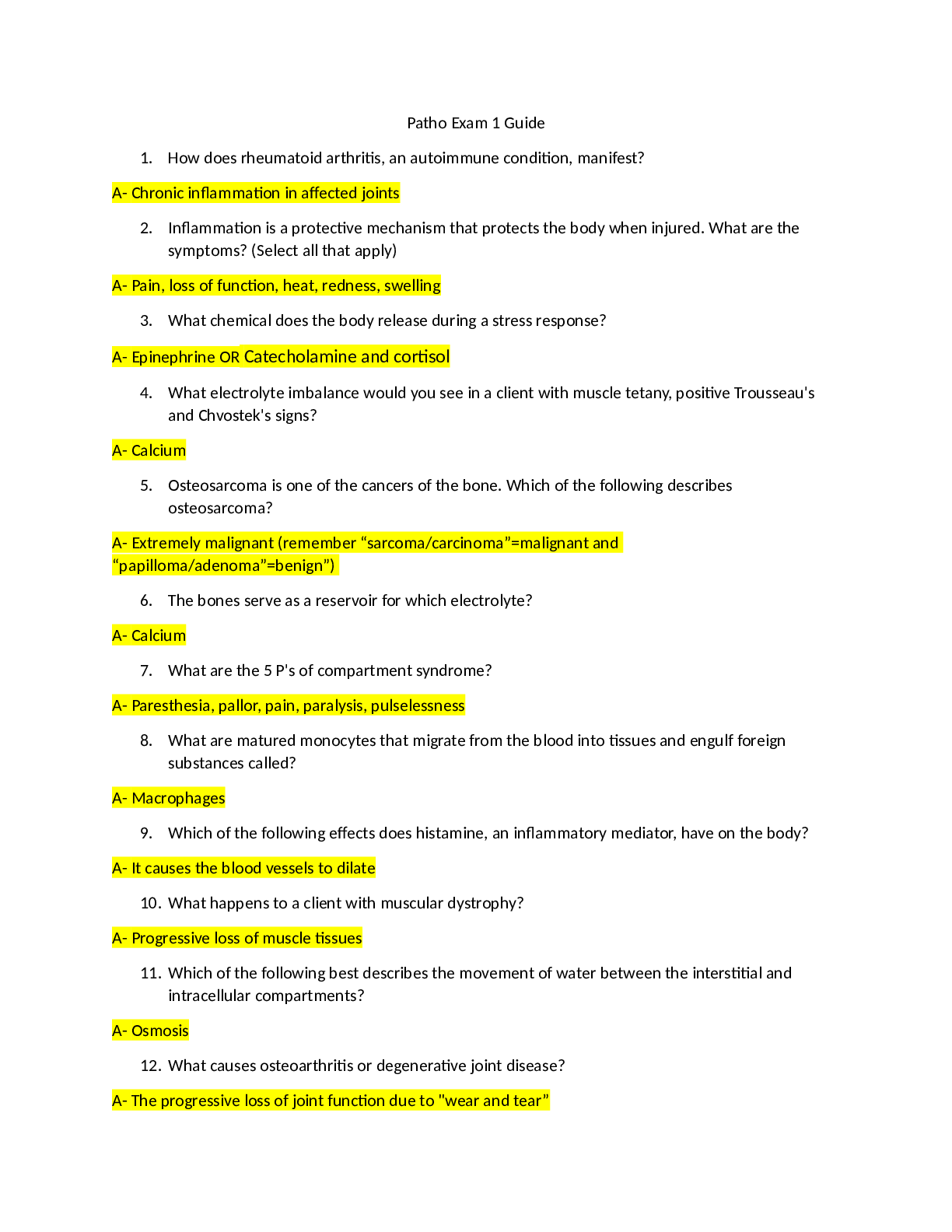
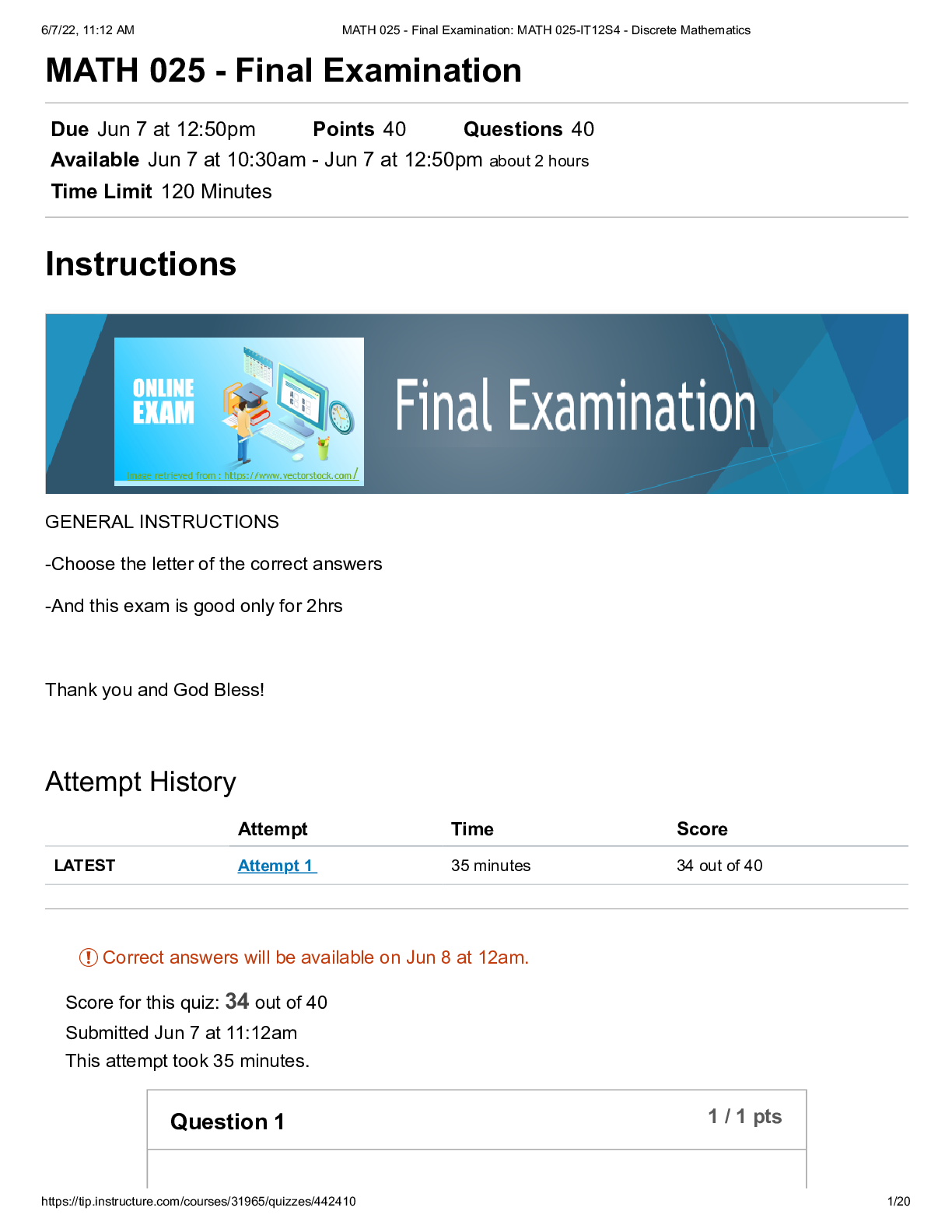
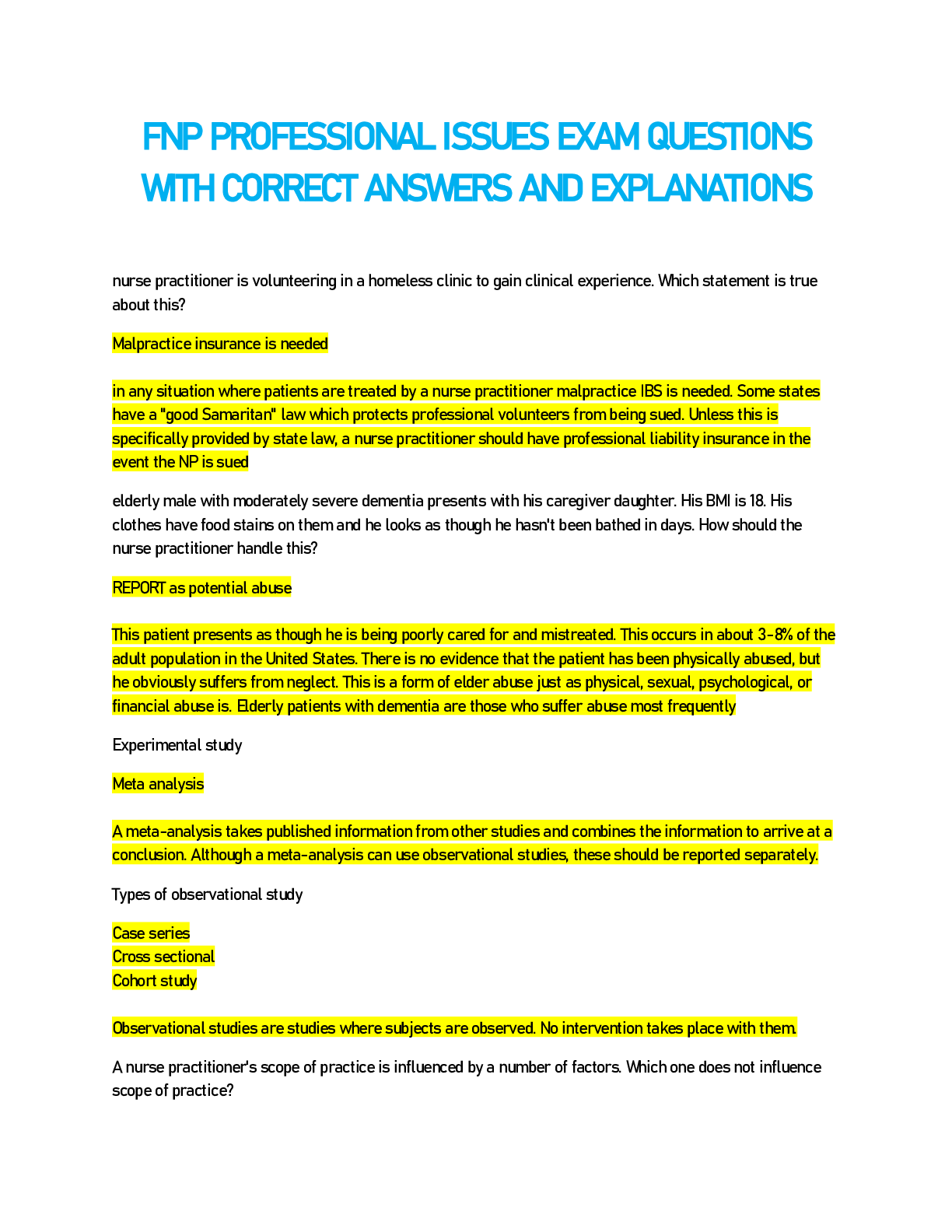

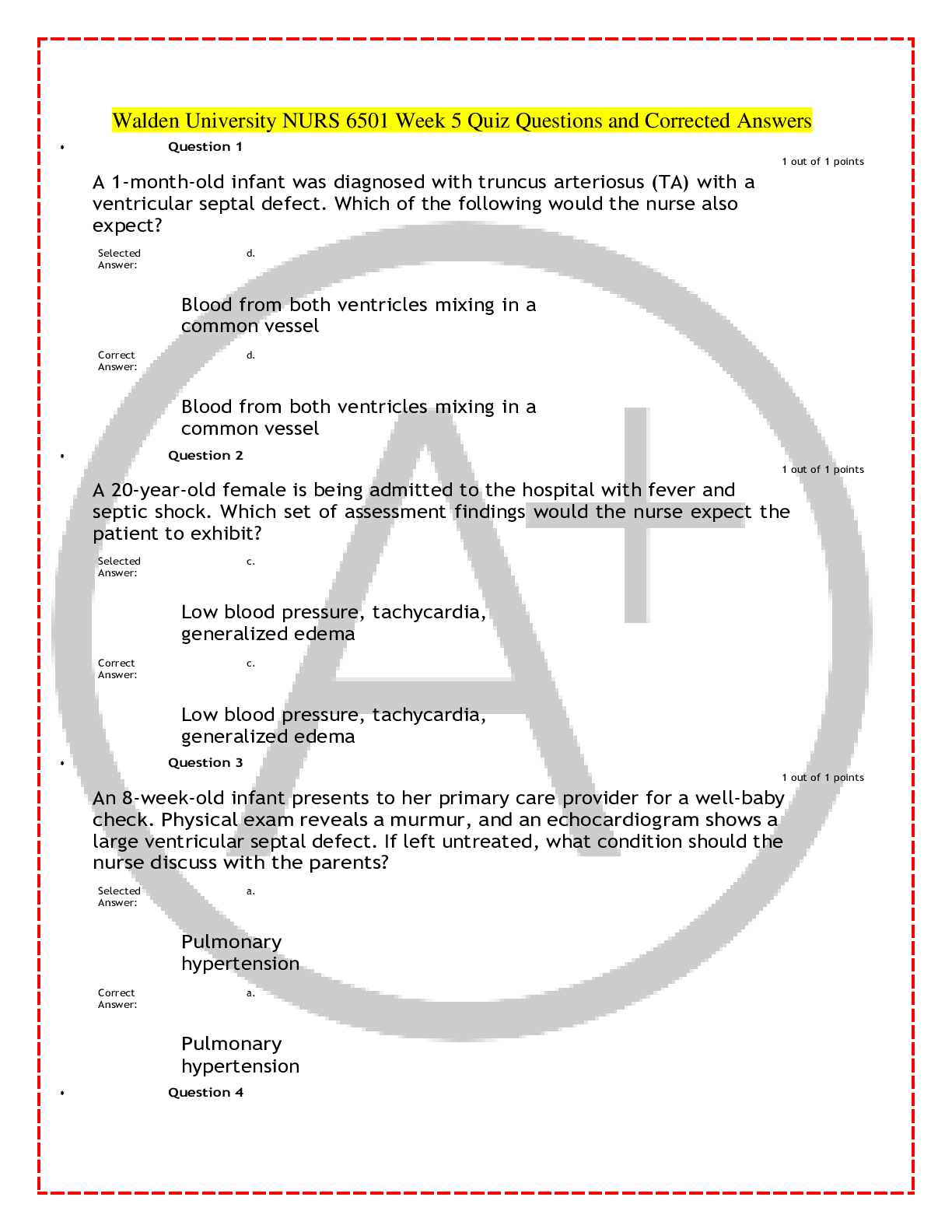
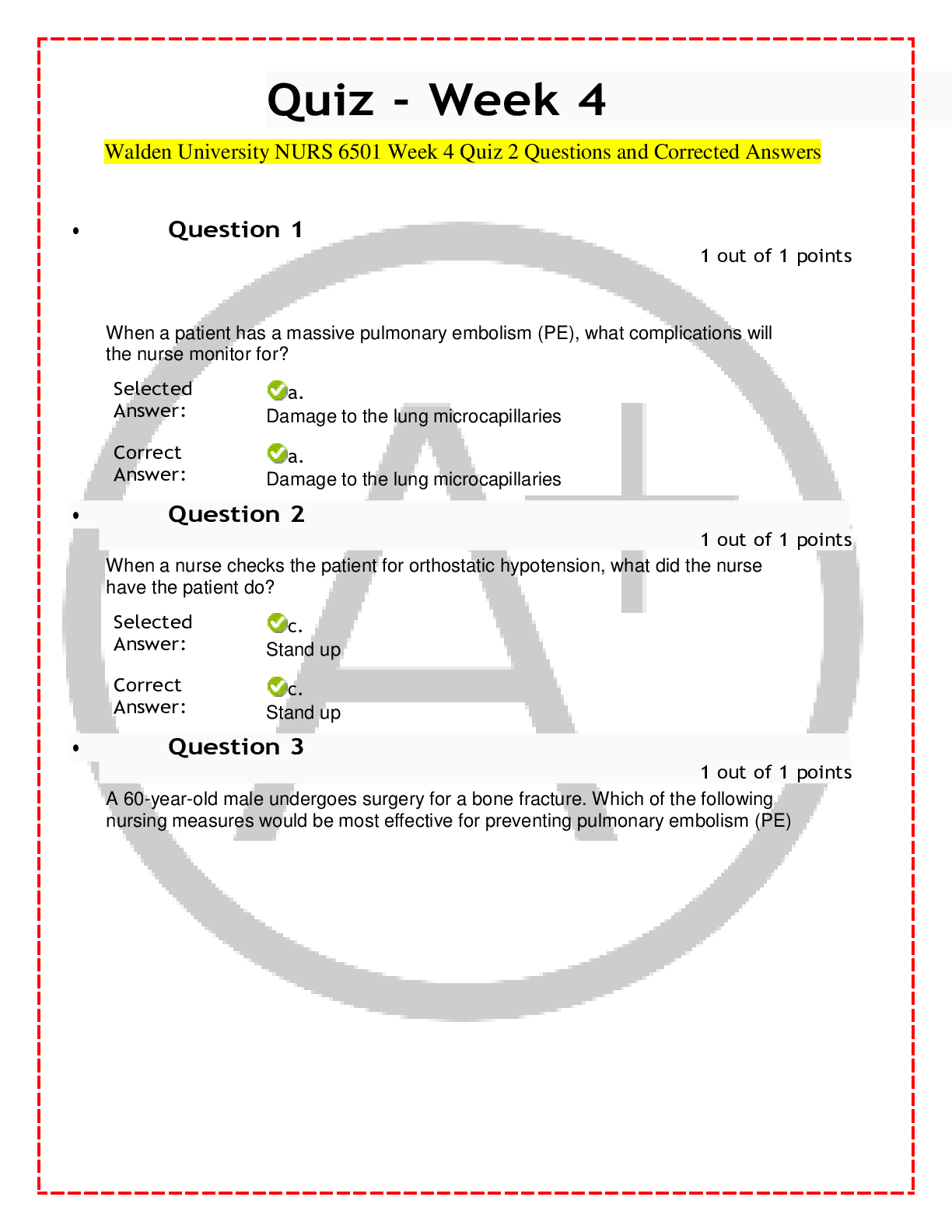
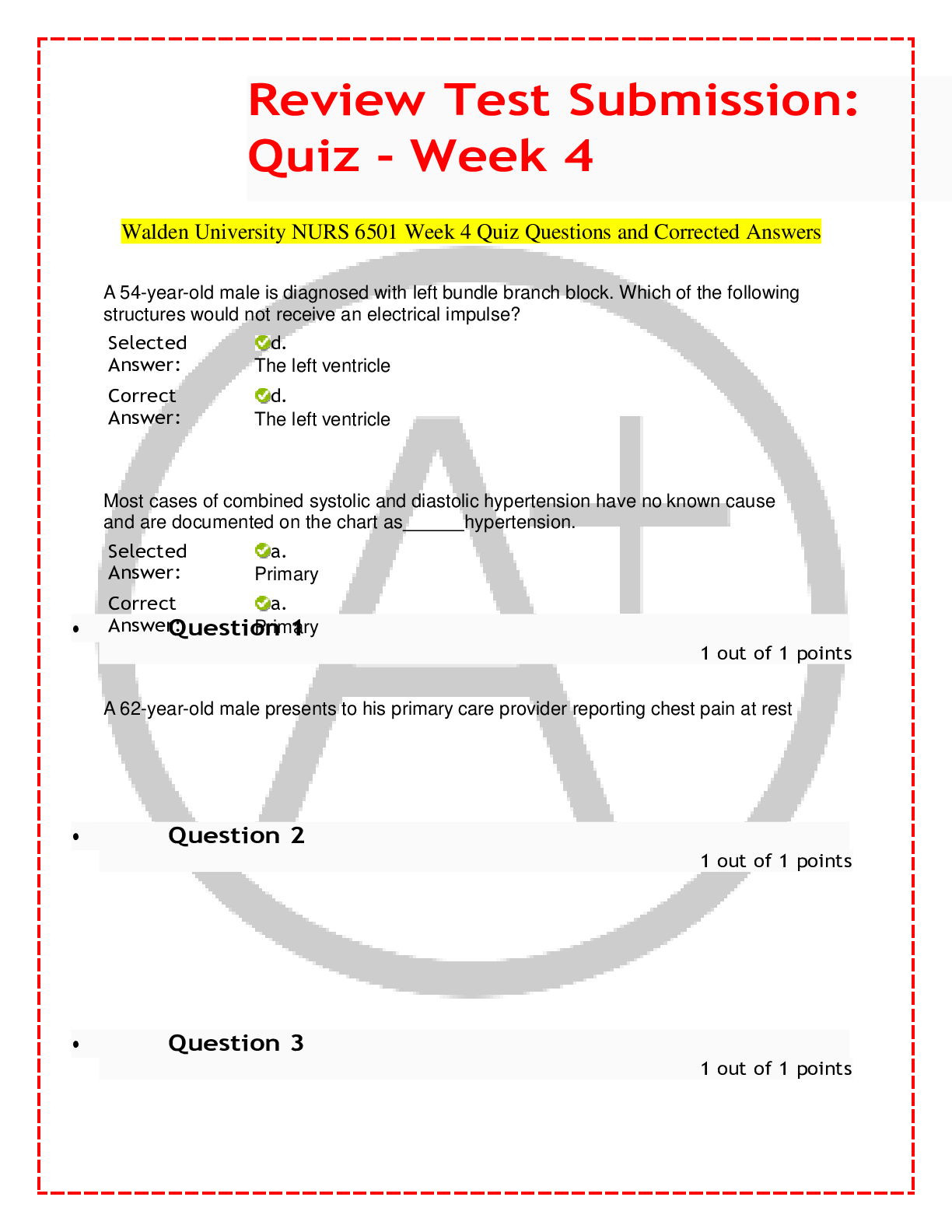
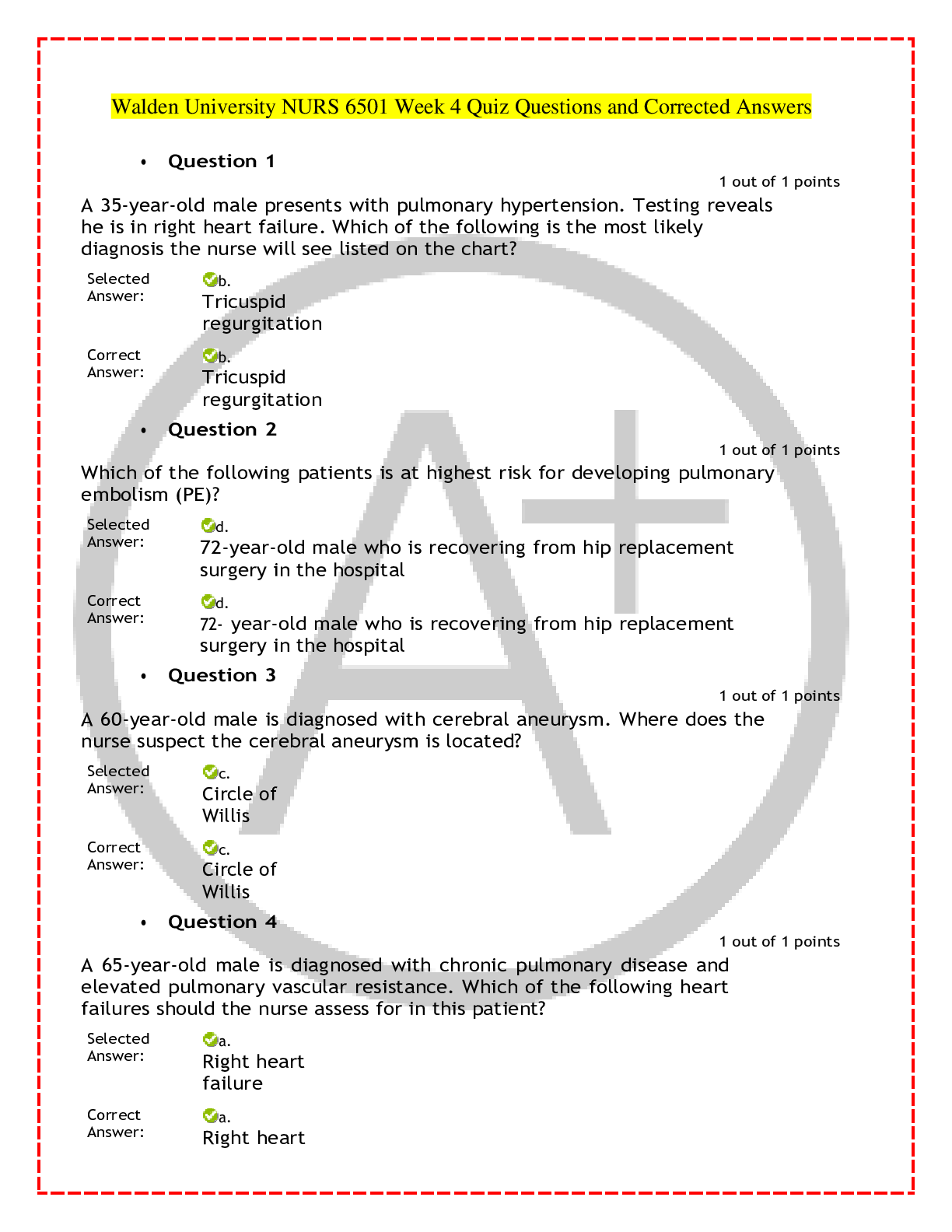

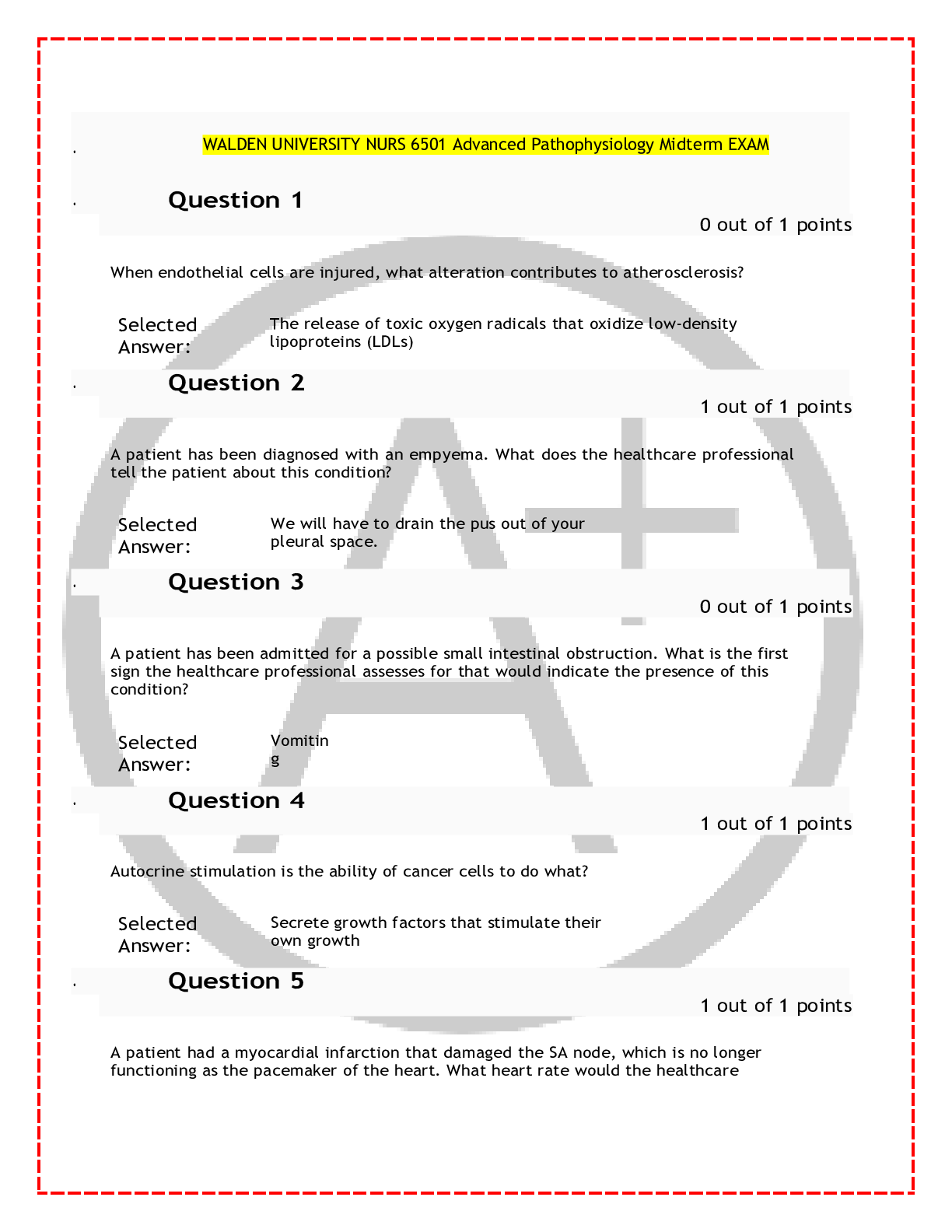


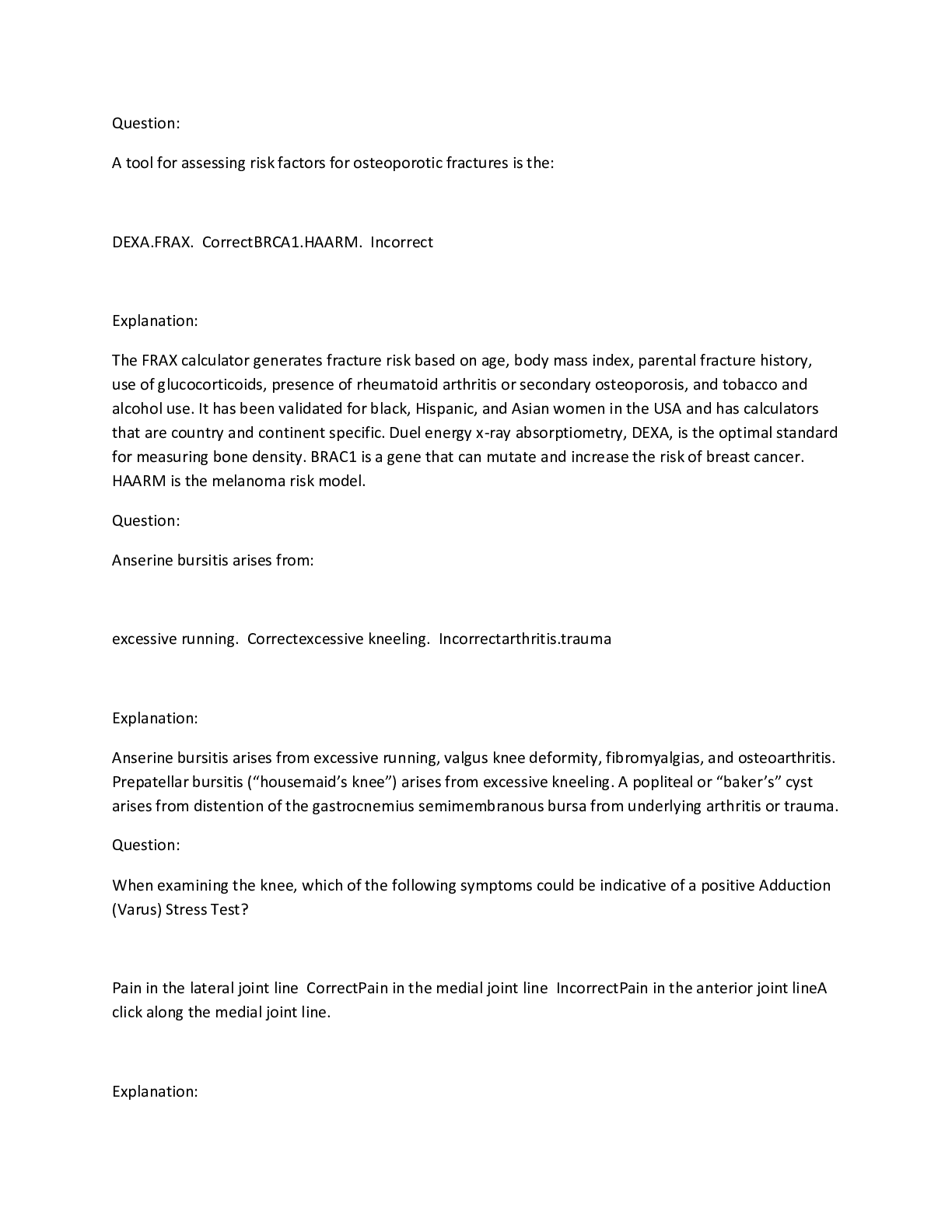
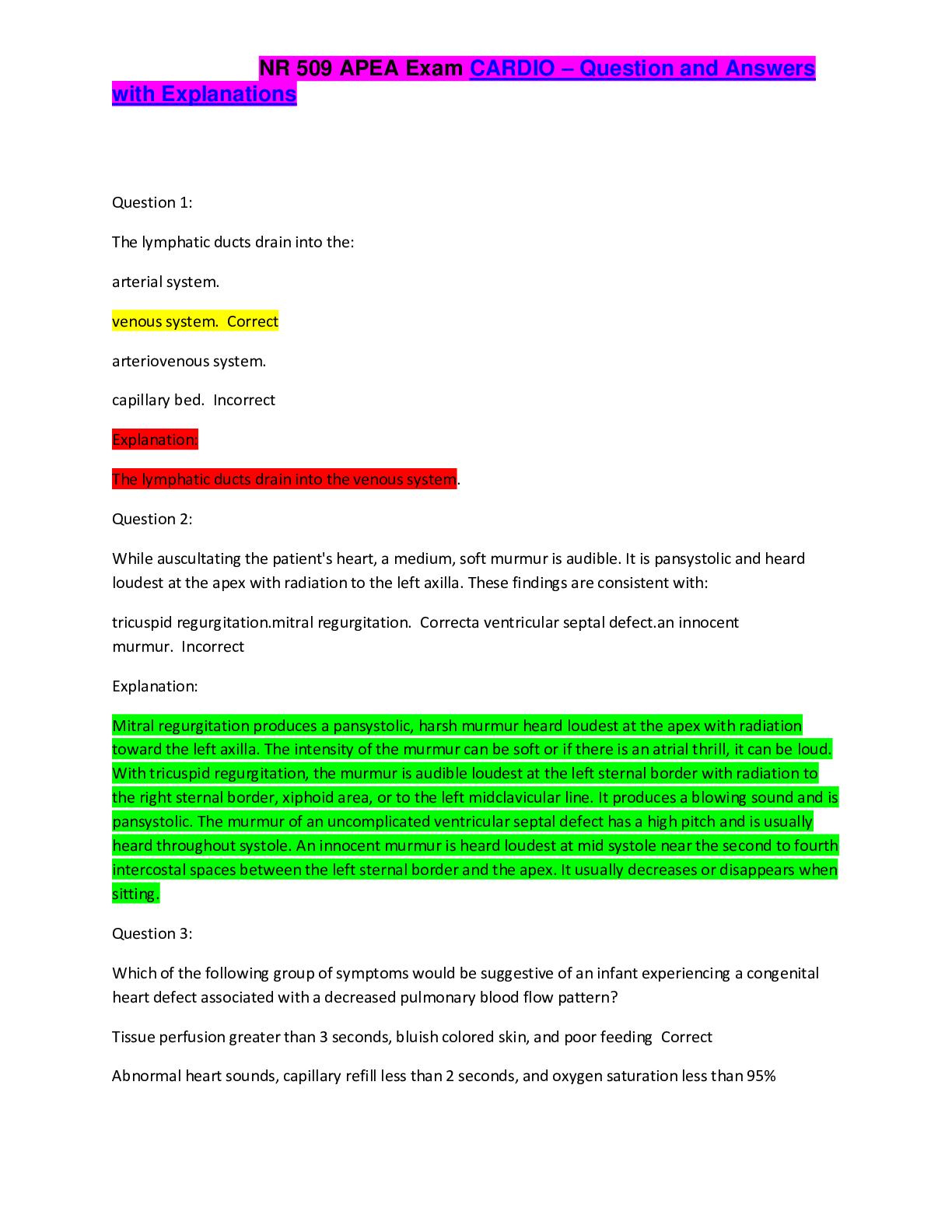
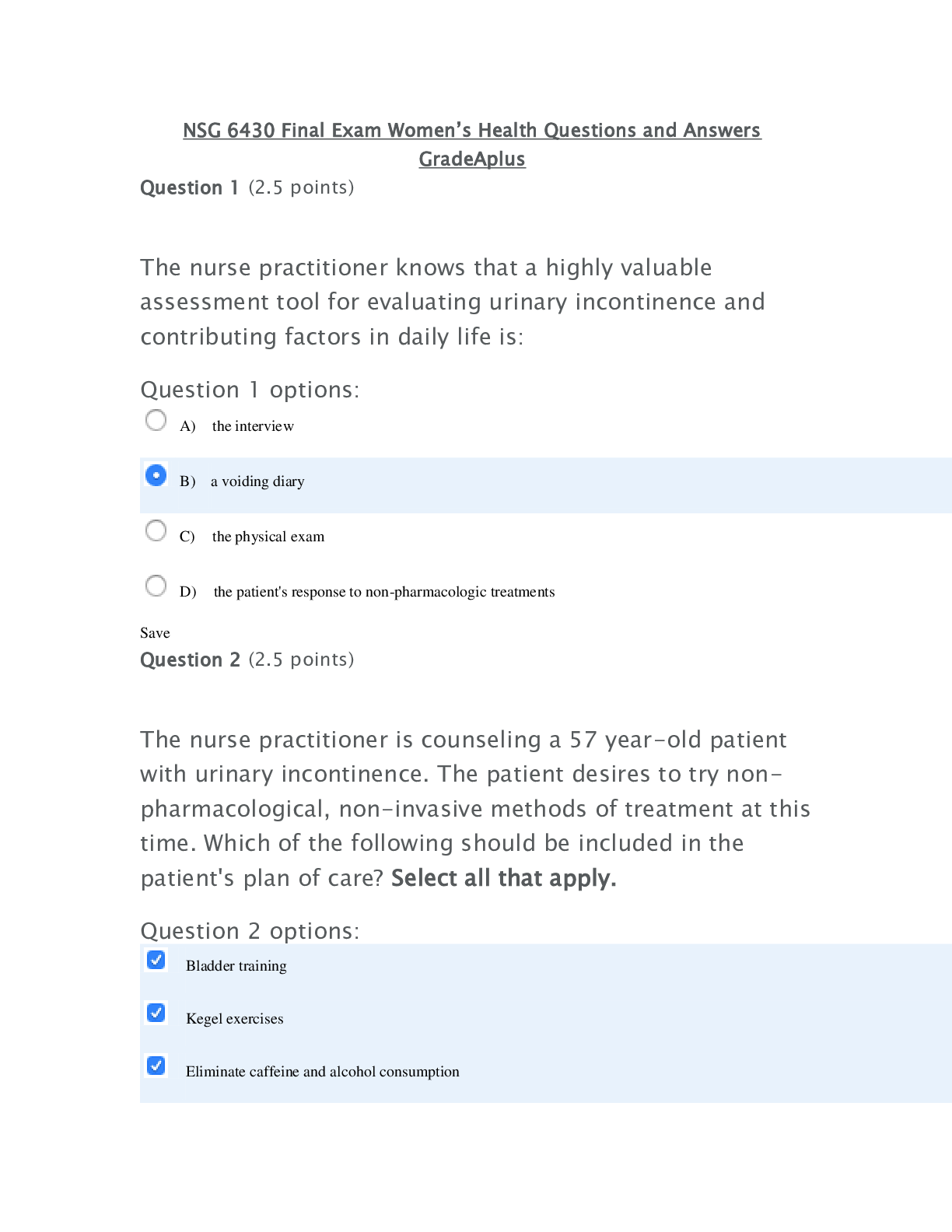
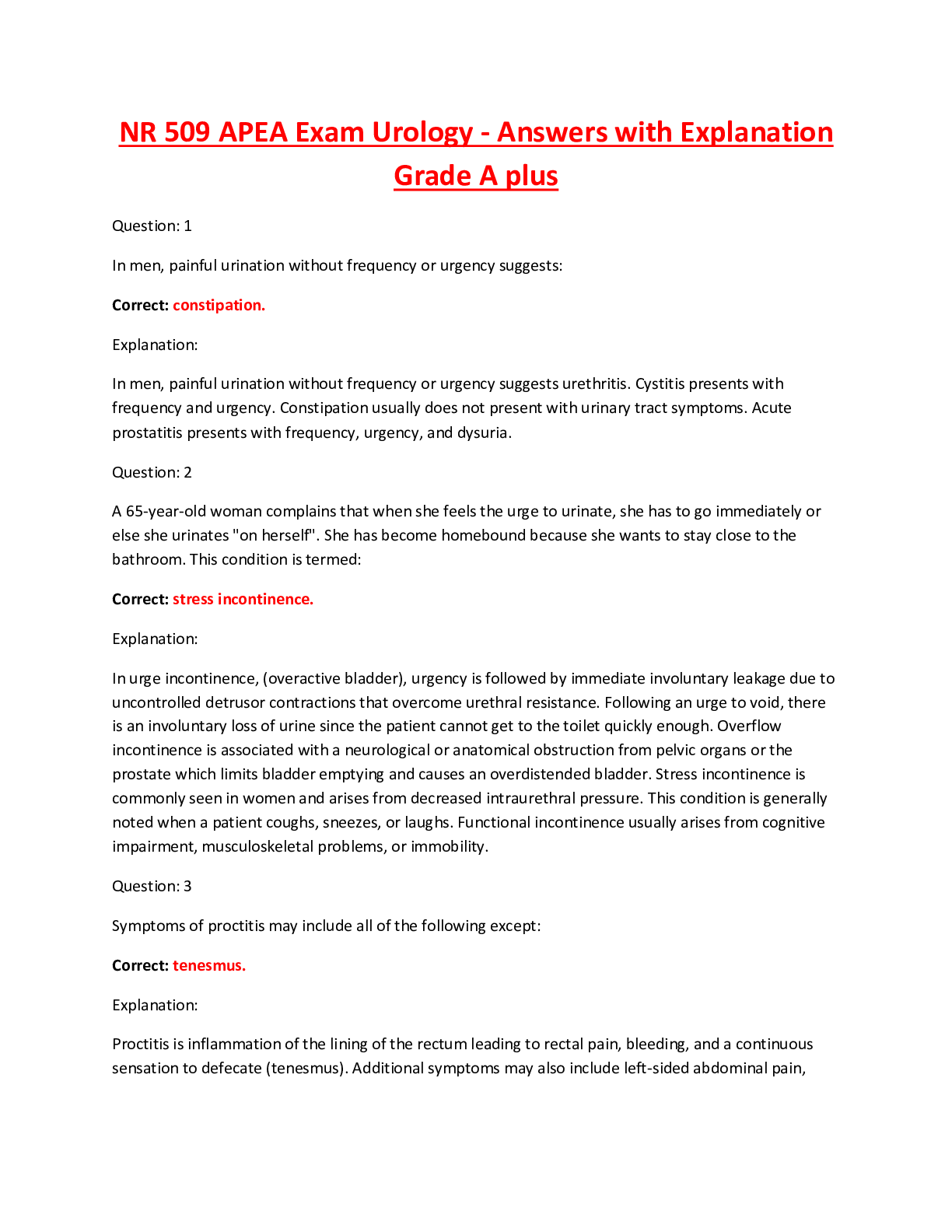
 – Chamberlain College of Nursing.png)



.png)




